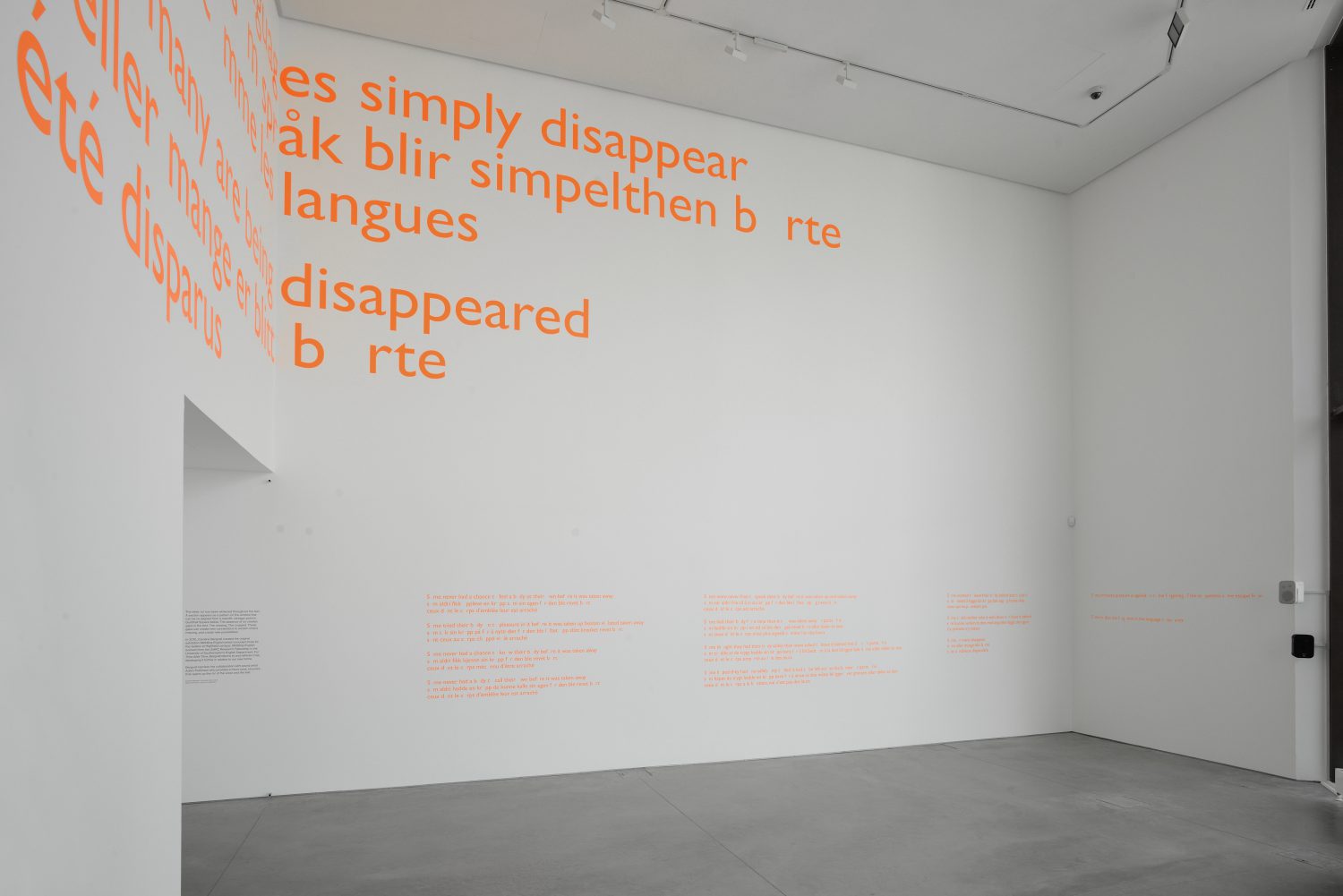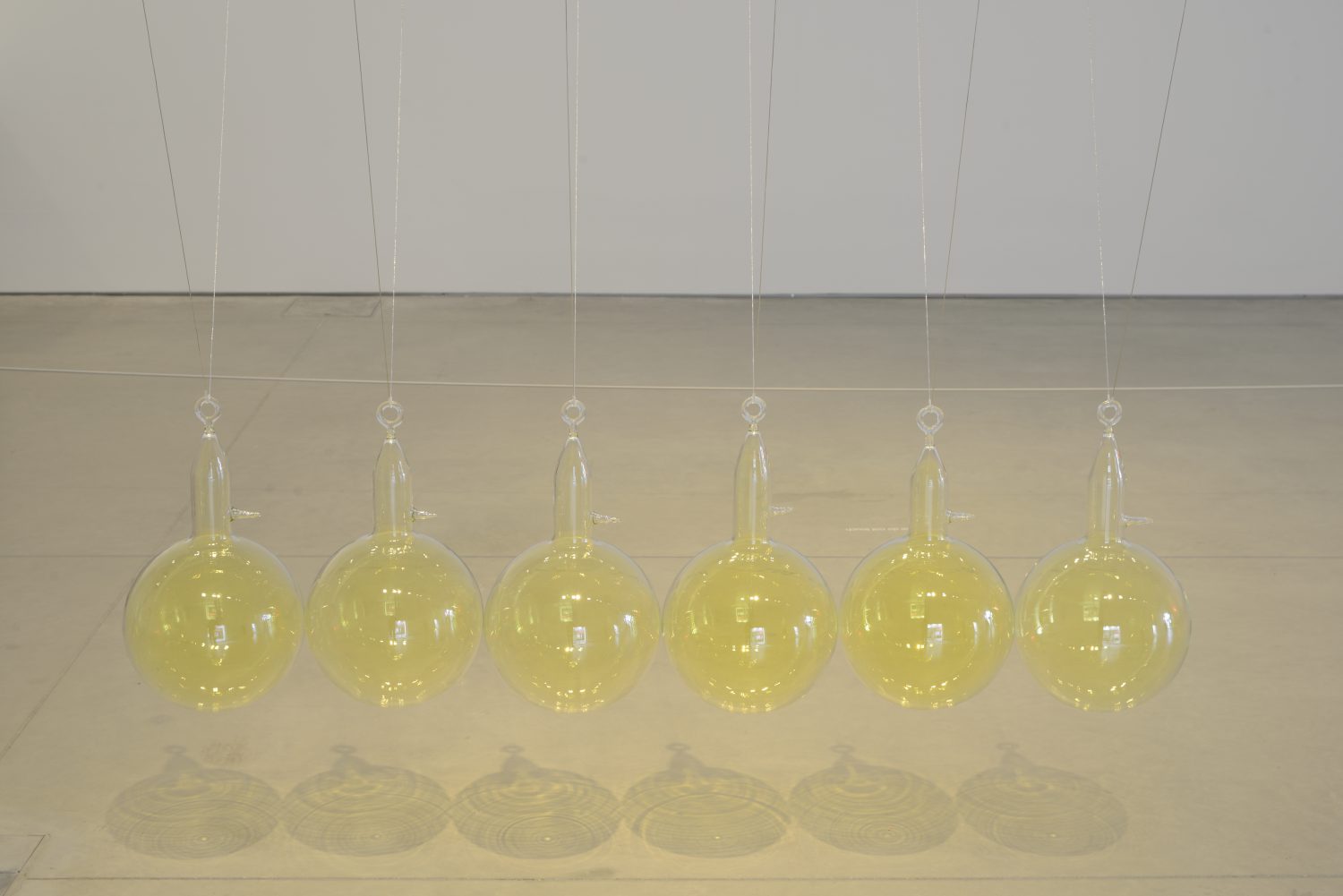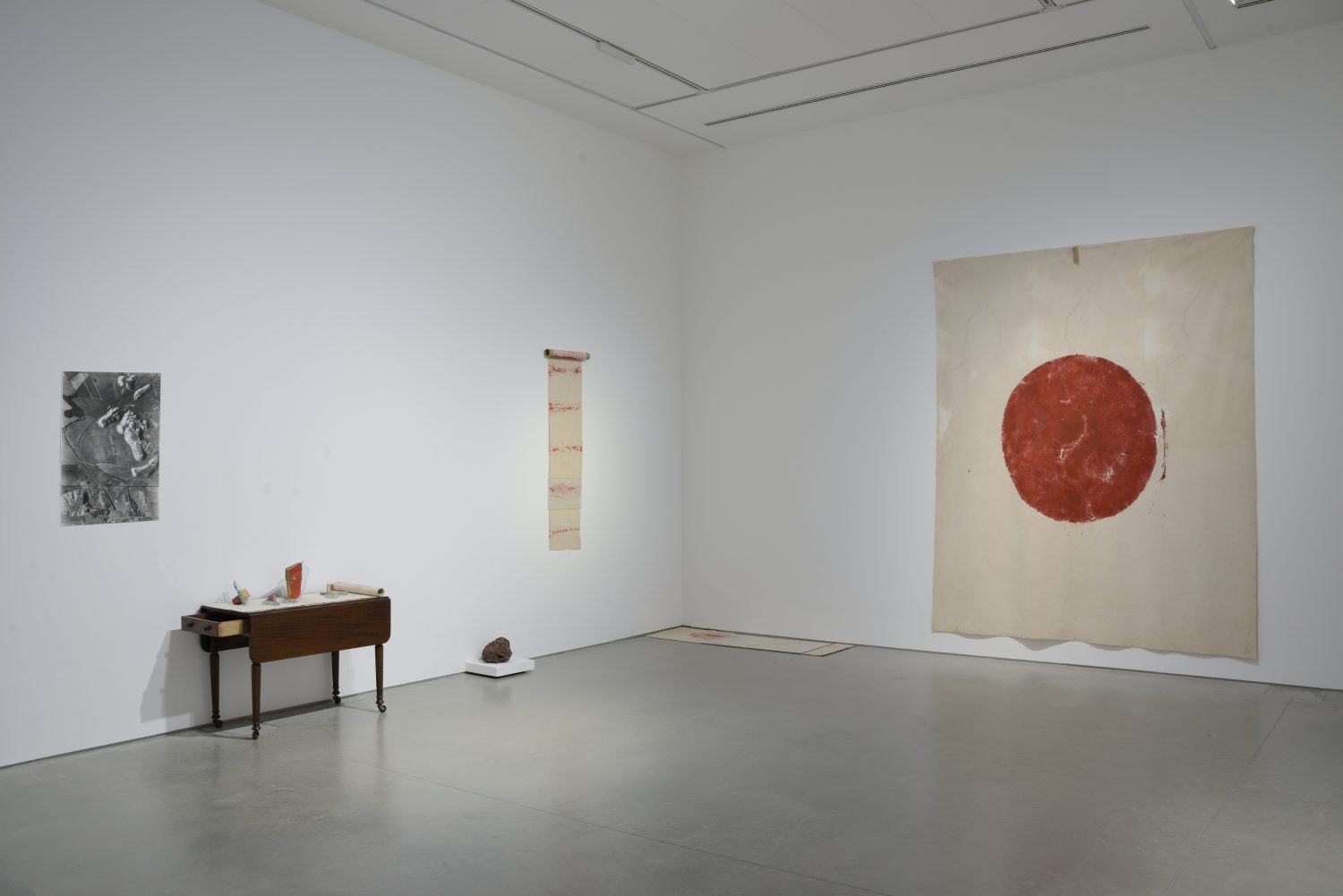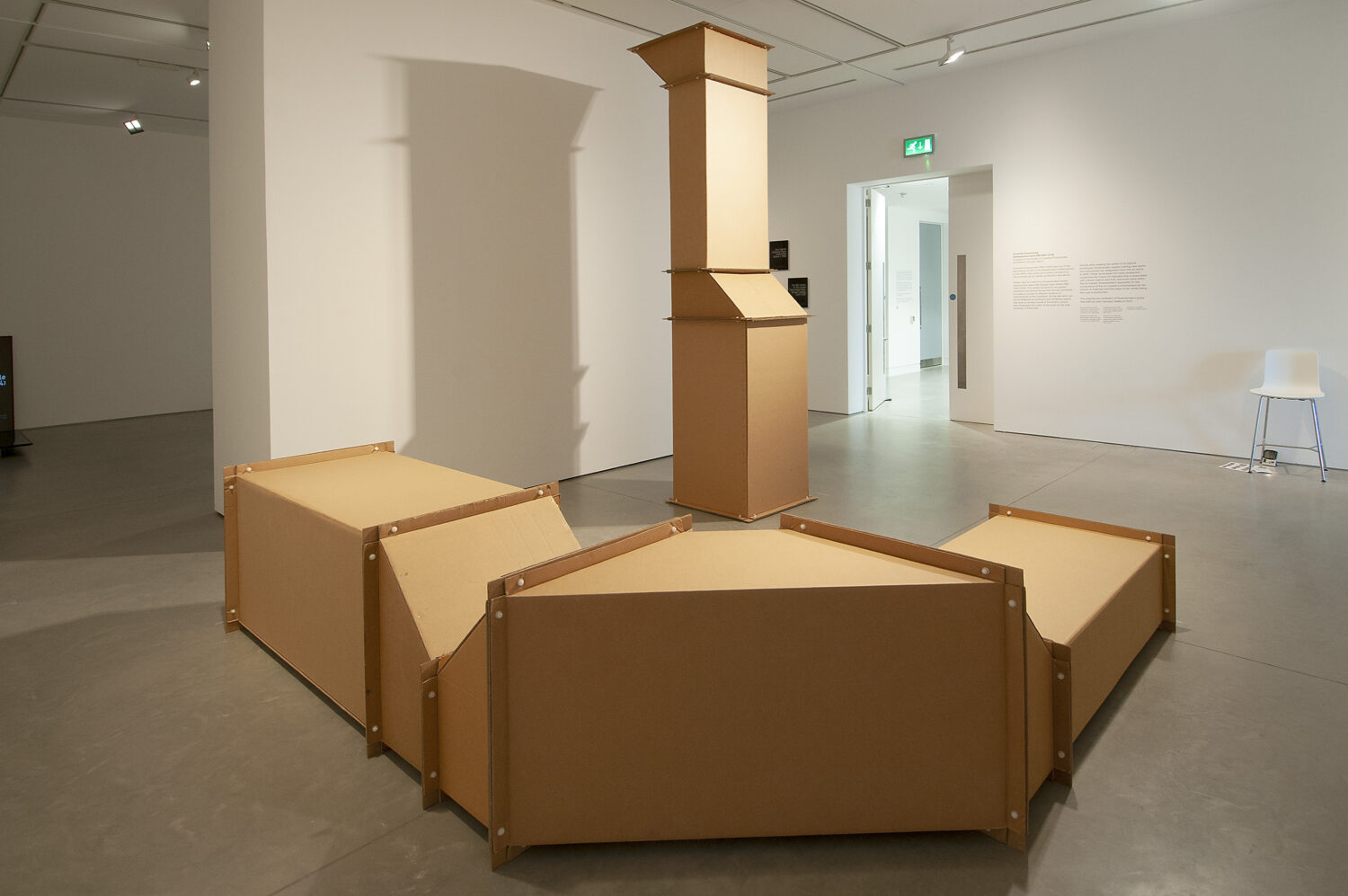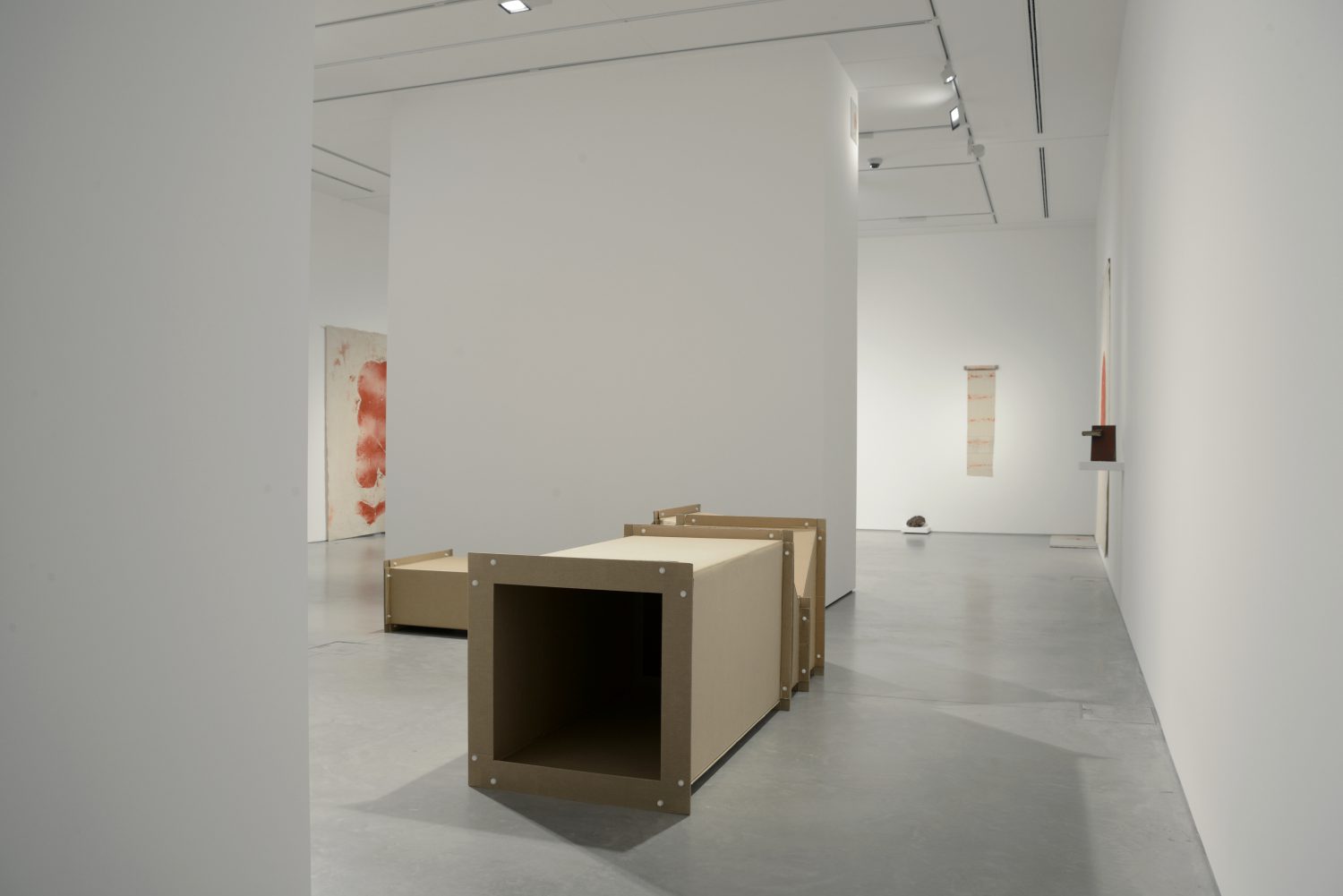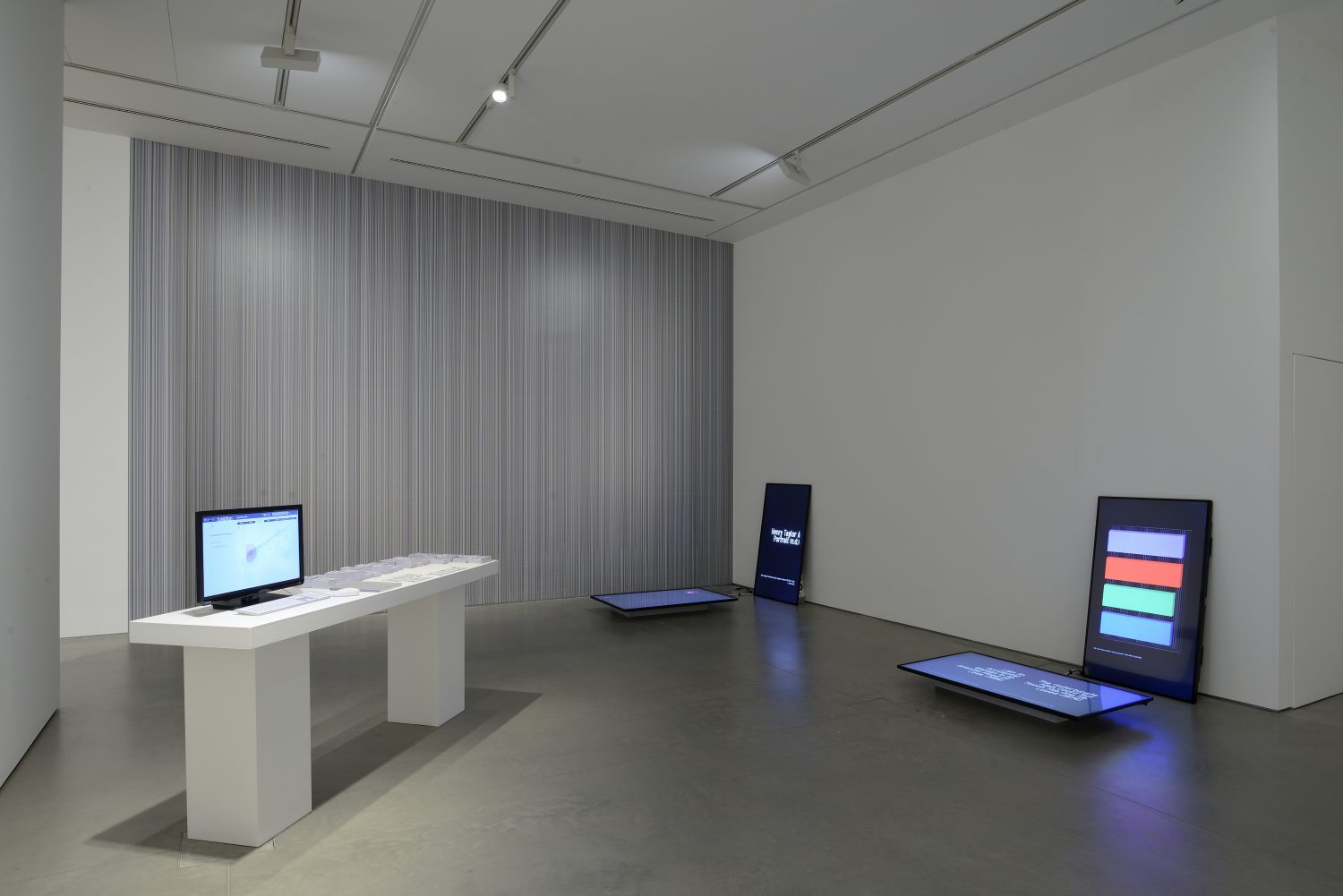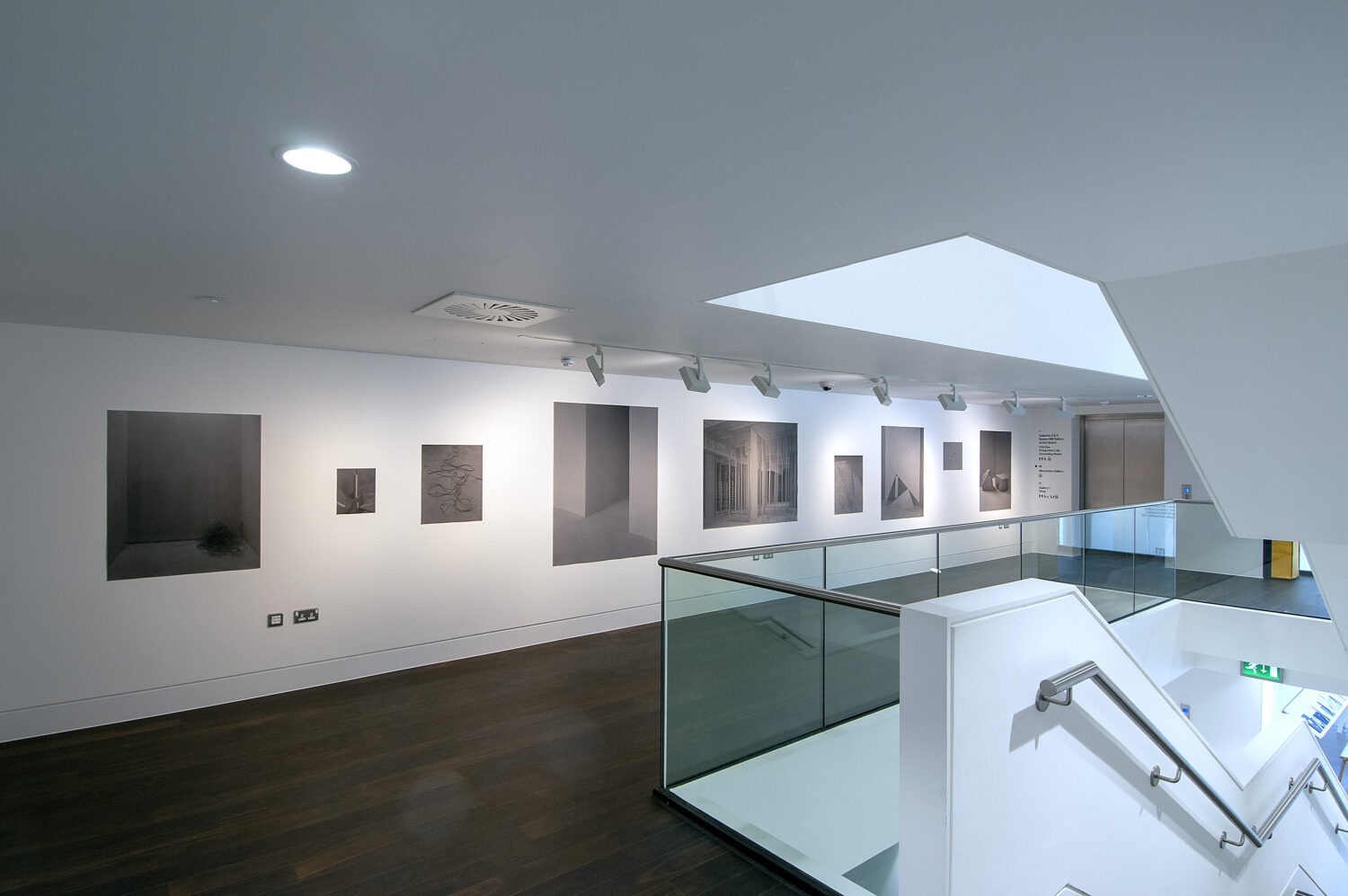John Hansard Gallery is pleased to present Time After Time Time, curated by Professor Stephen Foster (John Hansard Gallery Director 1987–2017) and reflecting on the Gallery‘s history and programme.
Since being founded in 1979, John Hansard Gallery has been located on the University’s Highfield Campus in a building that was originally designed to house a tidal model of the Solent basin. During this time, the Gallery was marked by a consistent and focused programme, an element of which explored the legacy of the early conceptual art movement and its influence on succeeding generations of artists. Embracing the Gallery’s unique position within the University, new commissions were often created through mutually beneficial collaborations between artists and academics from a wide variety of disciplines. In 2018, after 39-years on Highfield campus, John Hansard Gallery relocated to a new purpose-built city centre space in Southampton’s Guildhall Square.
Bridging both its previous and new city centre homes, Time After Time re-examines some key site-specific installations that were shown at the Gallery between 1993 and 2016 by artists Caroline Bergvall, Victor Burgin, Hamad Butt, John Latham, Charlotte Posenenske, alongside a new work by Walter van Rijn. By remaking these works, the pragmatics of reimagining the ‘original’ temporary installation and the significance of ‘site’ are explored.
In 2010, Caroline Bergvall created Middling English for John Hansard Gallery. Evolving from her AHRC Research Fellowship in the University of Southampton’s English Department, Middling English combined poetry, sound and a highly counterbalanced sculptural installation that spanned the Gallery. For Time After Time, Bergvall will create a new installation, drawing on elements from Middling English in combination with newly developed works.
Victor Burgin’s Belledonne was the final artist’s commission at John Hansard Gallery’s previous home on Highfield campus. Belledonne was commissioned for the exhibition Barthes/Burgin in 2016 that paired Burgin’s works with a selection of rarely seen drawings by Roland Barthes. Represented for Time After Time, Belledonne explores ideas around memory and absence, reflecting on Barthes’ stay as a young man in a sanatorium in the South of France while suffering from Tuberculosis.
In 1993, Hamad Butt was commissioned by the Gallery to make Familiars, an installation including three halogens from the periodical table (chlorine, iodine and bromine). These halogens are presented in highly precarious situations within glass containers, creating a giant version of a Newton’s Cradle, a Venus flytrap and a Jacob’s ladder. Familiars was included in Tate Gallery’s Rites of Passage exhibition in 1995, and subsequently entered their permanent collection in 2014.
John Latham’s installation N-U Niddrie was shown at John Hansard Gallery in 2006 as part of a retrospective of his work, Time-Base and the Universe. The exhibition was conceived with John Latham prior to his death in January 2006 and subsequently went on to tour to MoMA PS1. For Time After Time, these elements will be brought together to remake the 2006 version, and is part of the wider N-U Niddrie series that also includes Latham’s famous book and glass sculptures.
In 1967-8, Charlotte Posenenske created a series of ‘prototypes’, after which she ceased making work and announced her resignation from the art world with a manifesto published in Art International. Since the artist’s death in 1986, Dr Burkhard Brunn (the Executor of her Estate), has been reconstructing installations according to her predefined instructions. A solo exhibition of Posenenske’s works was held at John Hansard Gallery in 2011 and one of her recreated ‘prototypes’ will feature in Time After Time.
Walter van Rijn has created a new series of works that use the Gallery’s exhibitions history as their starting point for Time After Time. The artist has worked closely with the Gallery’s team and archives to create an extensive database of every artwork that has ever been shown throughout the Gallery’s 39-year history. Responding to this history, van Rijn’s work explores ideas around distribution in the digital age, uncovering arbitrary patterns and suggesting new ways of interpreting meta-data.
The exhibition Time After Time examines the long-term value of what are often initially conceived as temporary or transient works, helping to link the original John Hansard Gallery location with its new city centre home. The exhibition explores the nature of site-specificity in various ways, some of the works represented for Time After Time were made to be preserved, some have been adapted from earlier presentations, and some have been reimagined from their original showings.
A new publication has been produced on the occasion of Time After Time, featuring full-colour illustrations of works in the exhibition, alongside a curatorial essay written by Professor Stephen Foster.
Time After Time has been made possible through the generous support of the Henry Moore Foundation, who have also supported John Hansard Gallery’s exhibitions programme over many years, including some of the original exhibitions revisited for Time After Time.
Accompanying Time After Time, Sam Laughlin – recipient of the 2017 Jerwood Photography Award – presents a series architectural black and white photographs of the construction process of Studio 144, John Hansard Gallery’s new city centre home. Commissioned by the Gallery to record the building process, Laughlin’s exhibition will run concurrently with Time After Time and reflects on the Gallery’s transition from Highfield Campus to its new city centre location.
